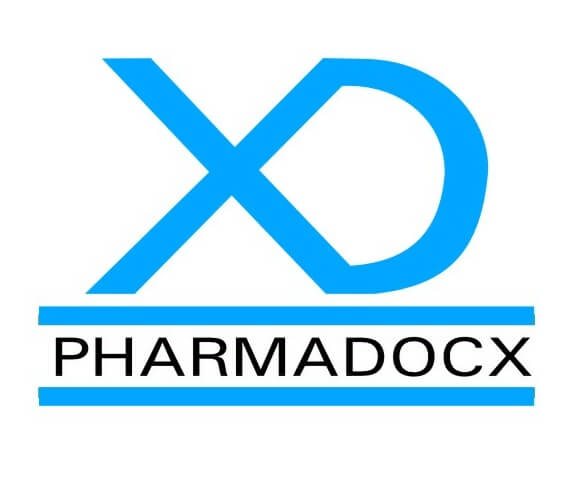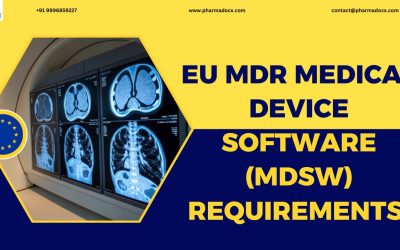Proper sterilization of medical devices is a necessity to reduce chances of infection caused by these devices. In this blog, we have discussed ETO sterilization for medical devices, which is a commonly used medical device sterilization method.
What is medical device sterilization?
Sterilization of medical devices is the process of destroying microbial contamination on medical devices till they can be safely used in the healthcare industry. All forms of microbes have to be destroyed to ensure patient and healthcare professional safety. The medical device sterilization method will depend on the nature of the medical device and its intended use.
Common medical device sterilization methods
We have discussed some of the common sterilization methods.
- Dry heat sterilization: Medical devices are subjected to high temperatures in a heating cabinet or conveyor tunnel. This exposure to heat for a long period eliminates or inactivates microorganisms. Owing to the absence of steam or water, dry heat sterilization does not usually cause corrosion. However, dry heat sterilization is time consuming.
- Steam sterilisation: Steam sterilisation is the most common sterilization method. It is the least expensive of all medical device sterilization methods and is non-toxic. In this method, devices are exposed to direct steam for a stipulated time at specific pressure and temperature levels.
- Vapour phase sterilization: Vapor-phase hydrogen peroxide or other agents are used to sterilize medical devices. Although this technique is similar to steam sterilisation, it may be a little faster than steam sterilisation.
- Ethylene oxide sterilization: Ethylene oxide gas is used to sterilize heat-sensitive devices. Ethylene oxide gas reacts with proteins, DNA, and enzymes to disrupt cellular activities. This kills microorganisms. Unlike heat-based methods, such as steam and dry heat, ETO sterilization for medical devices can be used on a variety of heat-sensitive materials without distorting or damaging the device.
- Filtration sterilisation: This technique employs a sterilising filter to sterilise the medical device. This sterilization method is particularly beneficial for medical devices loaded with biologics.
- Liquid sterilisation: Liquid chemical agents are used to sterilize medical devices.
How to choose the sterilization method appropriate for your medical devices?
The sterilization method appropriate for your medical device mainly depends on the following factors:
- Nature of the medical device
- Intended use of the medical device
- Biocompatibility of the medical device
- Required sterility level
ETO sterilization for medical devices
We have discussed some of the common sterilization methods. In this blog, we will focus specifically on ETO sterilization for medical devices. Owing to its potent virucidal, sporicidal, and bactericidal properties, ETO has become a popular medical device sterilizing agent. It has become a popular sterilization method because of its advantages over other methods.
ETO is a colourless and flammable gas that effectively eliminates microorganisms on medical devices. It reacts with DNA, proteins, and enzymes to disrupt cell functioning and division. This kills the microorganisms present on the medical device. Ethylene oxide can penetrate small nooks and crannies inside devices. Moreover, it can even sterilize the medical devices already packaged in plastic. This effective sterilization method can be used for reusable devices as well. ETO sterilization works well on resin, plastic, metals, glass, etc. Surgical kits, heart valves, syringes, catheters, and pacemakers are usually sterilized using ethylene oxide sterilization. This method can be used on a variety of heat-sensitive materials without distorting or damaging the device.
What is the process of ETO sterilization for medical devices?
The ETO medical device sterilization process involves exposing the devices to a carefully controlled environment containing ETO gas. This leads to the eradication of bacteria, viruses, and other microorganisms on the devices. The process typically includes 3 stages, namely preconditioning, gas exposure, and aeration phases.
Notably, ETO can penetrate packaging materials. This gives it an edge over other sterilization methods. It can be used for ensuring the sterility of medical devices even after they have been sealed in their final packaging. Moreover, ETO sterilization for medical devices is compatible with various materials, including metals, plastics, and electronic components. As opposed to steam sterilization, ETO sterilization operates at relatively low temperature. Hence, it is suitable for devices sensitive to heat, thereby potential damage caused by the sterilization process can be avoided.
The ETO steriliser chamber is usually exceptionally large, up to 7 m³. Hence, they are frequently used to sterilise large batches of devices that steam sterilisation is unable to achieve. Additionally, gauze and non-woven materials, such as disposable gowns, must be sterilised prior to their entry in hospital settings. As steam will deteriorate or distort these materials, steam sterilization cannot be used for these devices. Hence, ETO sterilization is used.
ETO sterilization stages
- Preconditioning stage: Optimal levels of humidity, pressure, and temperature are maintained in the chamber. The chamber’s air is eliminated to make room for the gas to enter. Additionally, to ensure the environment and personnel are safe, a leakage test is carried out. Since ETO works best in a humid environment, some steam is introduced into the chamber. Steam from the jacket or hot water from the heater is used to heat the chamber.
- Sterilization or gas exposure stage: In this stage, the medical device is sterilised. For ensuring the ETO is reaches every area of the load, a particular amount of steam is added when the ETO enters the chamber through evaporation. The sterilisation of the medical device begins once the chamber reaches the necessary ETO concentration. As different kinds of plastic materials absorb ETO, it is vital to maintain the proper concentration. Moreover, for safe and effective sterilisation, the chamber should have the right concentration of ETO.
- Aeration or degassing stage: Aeration is the longest and most crucial stage of the ETO sterilisation process. Notably, materials, such as rubber and plastics, may collect gas. If the medical device material retains the ETO, it can cause harmful tissue damage. To eliminate leftover ETO gas and enable the absorbed gas to evaporate from the sterilised devices, it is crucial to have this aeration stage. HEPA-filtered air at a temperature between 30 °C and 50 °C is circulated over the sterilized devices. This aeration treatment is usually performed for 48 hours.
Advantages of ETO sterilization for medical devices
- Low temperature sterilization method
- Highly efficiency, as it can destroy microorganisms, including resistant spores
- Large sterilizing volume. Hence, large batches of medical devices can be sterilised.
- Non corrosive to plastic, metal, and rubber materials. Heat sensitive materials can be sterilised using this method.
Disadvantages of ETO medical device sterilization method
- ETO is flammable
- Excessively long cycle
- Safety concerns, as ETO maybe carcinogenic to humans
- Hazardous residues on surgical tools and tubing can cause toxicity concerns
- ETO sterilization process has elaborate requirements. A separate ventilation system, safety equipment, and specific room conditions are required.
- High yearly expenses for maintenance, consumables, and repairs
- Not recommended for flexible scope
Safety Concerns
ETO sterilization for medical devices is highly effective. However, it has certain challenges. The gas is potentially hazardous for human health. Hence, it warrants stringent safety measures. Residual ETO must be carefully monitored. It should be within acceptable limits to avoid any harm to end-users.
Regulatory requirement
Medical device sterilization methods are regulated by the regulatory bodies. Owing to the potential risks associated with the ETO sterilization method, regulatory bodies have formulated strict guidelines for its use. Manufacturers must adhere to these guidelines for the safety and efficacy of sterilized medical devices as well as the safety of end users.
ETO sterilization for medical devices is one of the commonly used and effective sterilization methods. However, stringent regulations are in place for ETO sterilization for end user safety. For guidance with medical device sterilization method regulatory guidelines, email at [email protected] or call/Whatsapp on 9996859227.





